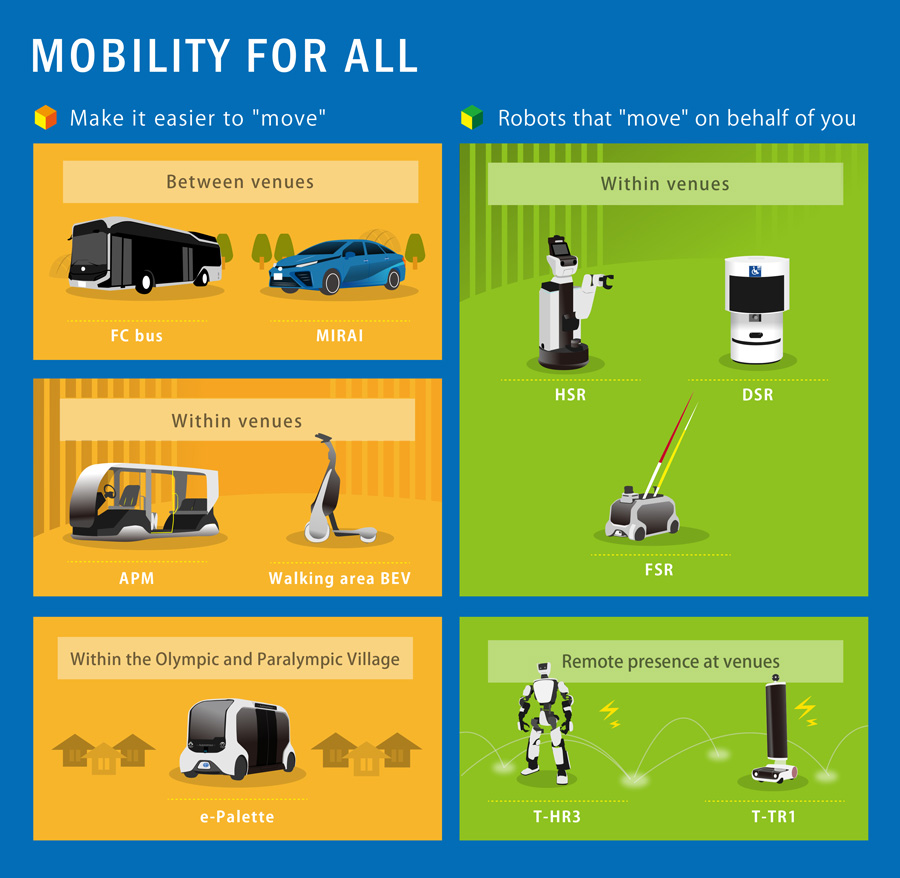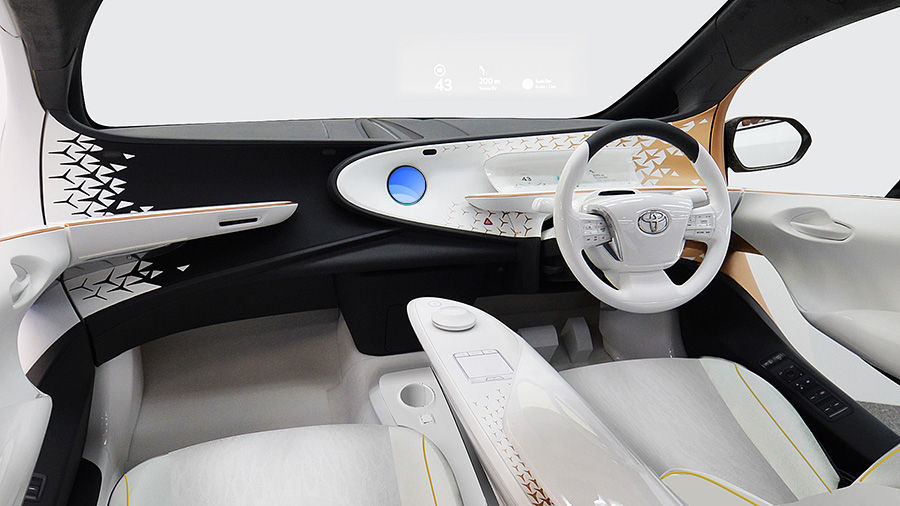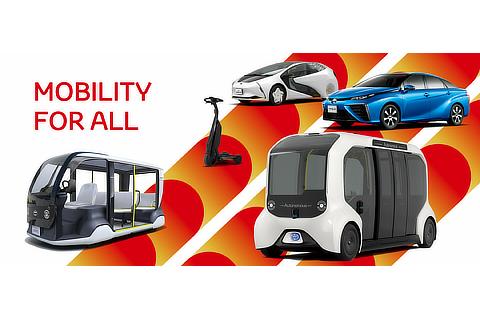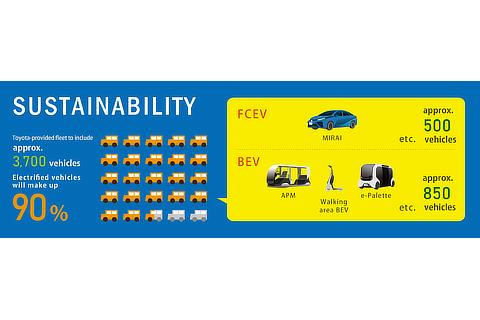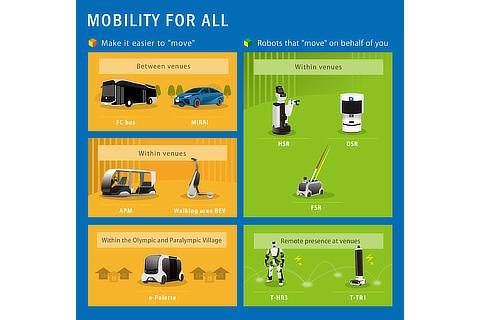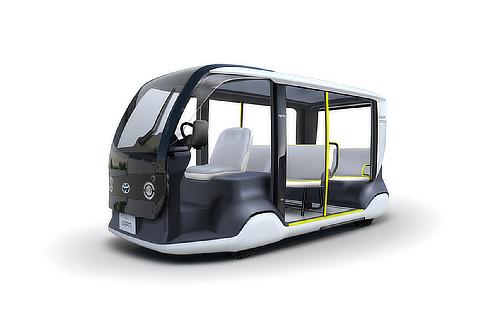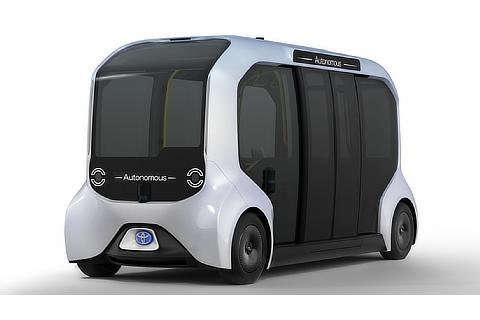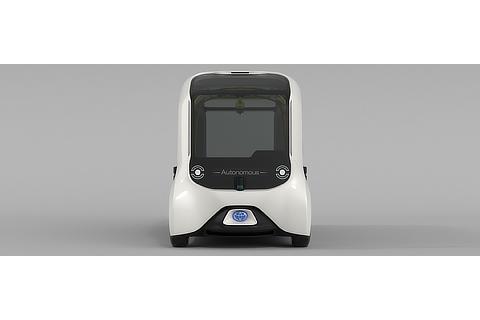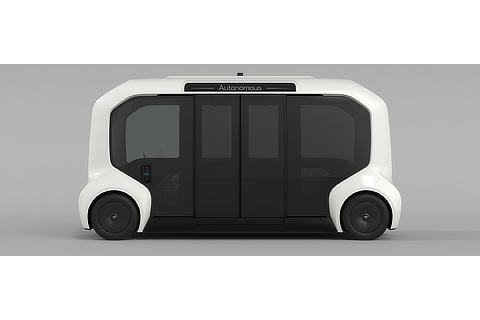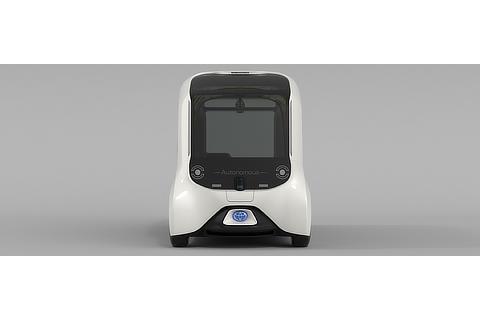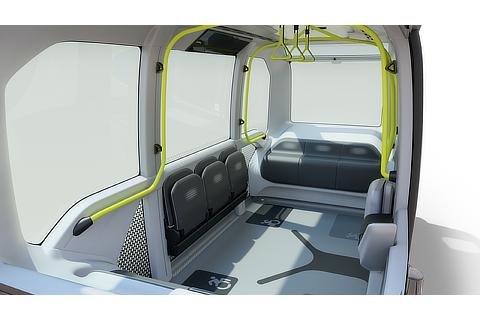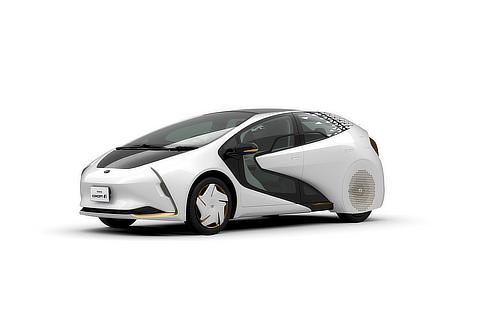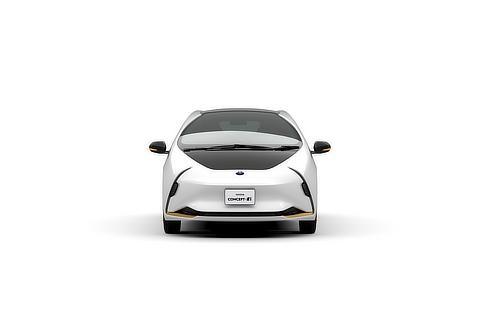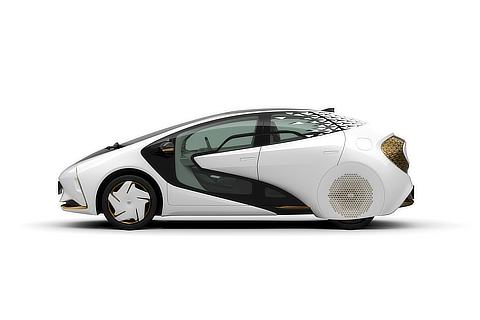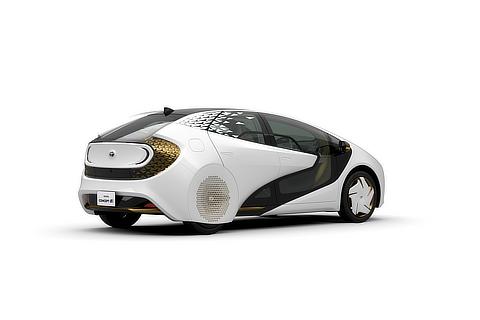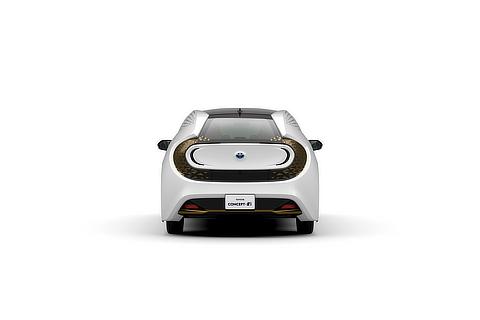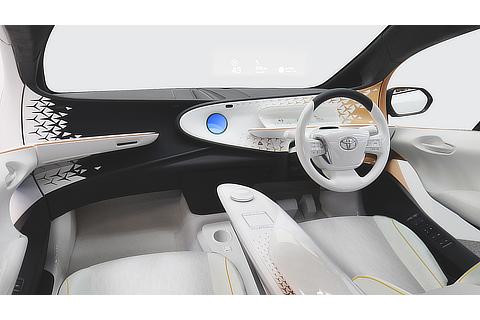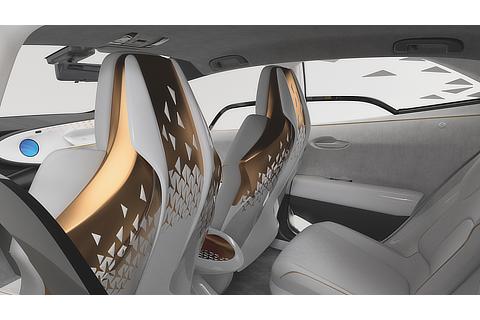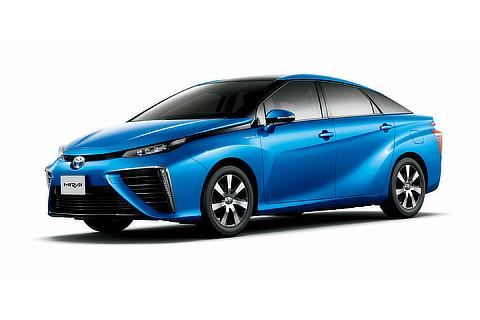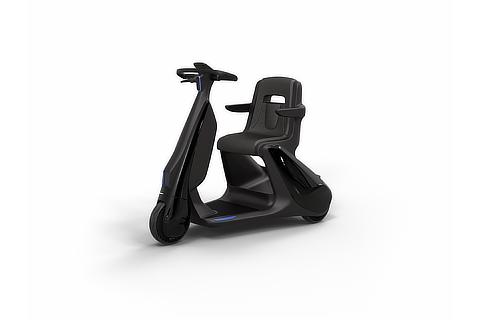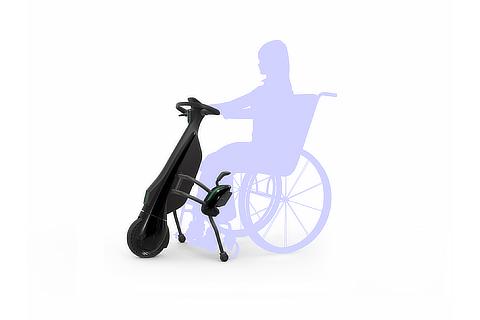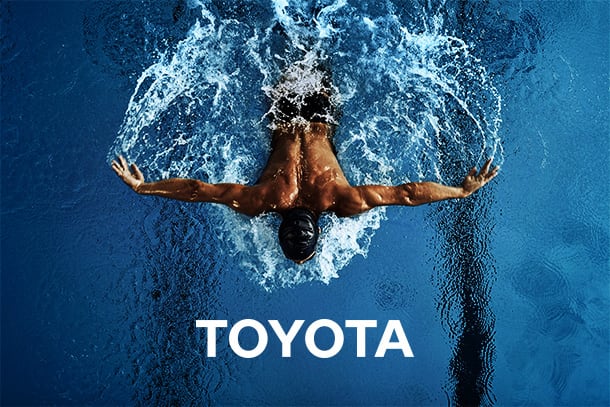Aug. 23, 2019
Toyota Provides Diverse Mobility for Tokyo 2020, including a Full Line-up of Electrified Vehicles
- Approx. 90 percent of Toyota's vehicles will be electrified at the Olympic and Paralympic Games Tokyo 2020, aiming to achieve the lowest emissions target level of any official vehicle fleet used at the Olympic and Paralympic Games and reduce the burden on the environment
- Toyota to develop a unique version of certain vehicles and vehicles initially for use during Tokyo 2020, offering a wide-range of diverse mobility
Tokyo, Japan, August 23, 2019―Toyota Motor Corporation (Toyota), worldwide partner of the Olympic and Paralympic Games, today announced that it will provide a full line-up of electrified vehicles, including unique versions of certain vehicles as well as vehicles developed specifically to support the Olympic and Paralympic Games Tokyo 2020 (Tokyo 2020). With its electrified line-up, Toyota, together with the Tokyo Organising Committee of the Olympic and Paralympic Games, aims to achieve the lowest emissions target level of any official fleet used at the Olympic and Paralympic Games, and thereby also helping to reduce the environmental burden of the Games.
Toyota will provide a total of around 3,700 mobility products and/or vehicles for Tokyo 2020. The majority, or nearly 90 percent, of the official vehicle fleet will be electrified. Electrified vehicles include Hybrid Electric Vehicles (HEV), Fuel Cell Electric Vehicles (FCEV), such as the hydrogen-powered Mirai, Plug-in Hybrid Electric Vehicles (PHEV), the Prius PHV (known as Prius Prime in some markets), and Battery Electric Vehicles (BEV), including the "APM" (Accessible People Mover) and the e-Palette as well as TOYOTA Concept-i, which will provide a unique and wide-range of diverse mobility during Tokyo 2020. Among the electrified vehicles provided, Toyota will include approximately 500 FCEVs and approximately 850 BEVs, the largest of any fleet for a Games to date.
Out of the approx. 3,700 mobility products and/or vehicles for Tokyo 2020, 2,700 vehicles will be part of the official fleet providing transportation support between venues during the Olympic Games. These will be commercially-available vehicles, such as Mirai, etc. Preliminary calculations suggest that the CO2 emitted by the commercially-available fleet for Tokyo 2020 will average less than 80 g/km*1, resulting in a reduction by approx. half of the typical amount when compared to a similar sized fleet of mostly conventional gasoline and diesel models. Additionally, further reductions are anticipated during the Games when combined with Toyota's other advanced mobility products and/or electrified vehicles, including the unique versions of vehicles or vehicles designed for use at the Games. As such, Toyota aims to achieve the lowest emissions target level of any official fleet used at the Olympic and Paralympic Games.
Furthermore, to help avoid collisions and reduce/mitigate potential damage or injury, all of the commercially-available vehicles for staff transportation support will come equipped with Toyota's preventative safety technologies, including "Toyota Safety Sense" and "Lexus Safety System +". Additionally, nearly all the commercially-available vehicles will also be equipped with Intelligent Clearance Sonar (ICS), designed to assist with braking in the event of unintended misapplication of the acceleration pedal.
Aside from the official fleet, Toyota will also support Games operations with other vehicles, including the mass-transit Fuel Cell Bus "Sora", assistive vehicles that help lift passengers into their seats or are equipped with an attached slope to allow passengers with wheelchairs access to enter the vehicle via the back door, and other vehicles such as Fuel Cell Forklifts made and sold by Toyota Industries Corporation.
Toyota's Pillars for Tokyo 2020
Toyota's three main pillars for Tokyo 2020 center on (1) Mobility for All, or allowing all people the freedom to move, (2) Sustainability, centering on the realization of a hydrogen society (environment/safety), and (3) Transportation support for the Games using the Toyota Production System (TPS). With these three pillars, Toyota aims to provide mobility solutions that go beyond the traditional provision of vehicles.
Through its full line-up of electrified vehicles to reduce environmental impact and mobility solutions that combine TPS with diverse mobility, Toyota will support smooth operations for Tokyo 2020, while also supporting the transport of those attending the Games, including staff, athletes, and visitors. Furthermore, through its robots, Toyota will provide support of event operations and unique experiences, exceeding the general notion of what mobility means for the Games. These activities will be pursued while Toyota continues to challenge itself to provide "Mobility for All" by offering various mobility solutions to make Tokyo 2020 a one-of-a-kind event.
Below is an outline of the main vehicles that Toyota will provide:
- Vehicles developed specifically for Tokyo 2020
- APM
- Approx. 200 units to help attendees with special mobility needs travel within Tokyo 2020 event venues such as the Olympic Stadium and Ariake Tennis Park for "last one mile" transportation and relief activities.
- Details of the APM were released on July 18 (full release here).
- Unique vehicle versions for Tokyo 2020
- e-Palette (Tokyo 2020 version)
- Toyota's first BEV developed specifically for Autono-MaaS*2, the Tokyo 2020 e-Palette will support transportation needs of staff and athletes, with a dozen or more running on a continuous loop within the Olympic and Paralympic Village.
- With a low-floor, electric slope and by stopping precisely at each stop, leaving little to no gap or opening between the curb and the bus, the e-Palette will make travel easier for wheelchair passengers and support smooth transport over short distances.
- The vehicle is anticipated to feature automated driving (up to SAE Level 4*3). In addition to having an operator aboard every vehicle to monitor the automated driving operation, Toyota will also provide a digital control system to monitor the general operating conditions of the vehicle.
Vehicle Specifications
| L / W / H (mm) | 5,255 (L) / 2,065 (W) / 2,760 (H) |
|---|---|
| No. of passengers | Up to 20* (including one operator)
*For wheelchairsUp to 4 wheelchair + 7 standing passengers |
- Toyota Concept-i (Tokyo 2020 version)
- With a characteristic "high-tech one-motion silhouette" exterior design, the Concept-i hopes to bring further excitement and attention to the Games through its activities as the operating vehicle at the Olympic torch relay and lead vehicle in the marathon.
- Also, in addition to the vehicles provided for the Games, the public roads surrounding the Toyota City Showcase "MEGAWEB" in the Tokyo Odaiba/Toyosu area are expected to be used for test rides/drives of vehicles with advanced driving technology. This includes the Toyota Concept-i, which will demonstrate automated driving (SAE Level 4*3) and its functions, including "Agent conversation", that uses artificial intelligence to understand people, helping people experience new ways to move as well as the future of "beloved cars".
Vehicle Specifications
| L / W / H (mm) | 4,530 (L) / 1,840 (W) / 1,480 (H) |
|---|---|
| No. of passengers | Up to 4 |
- Other vehicles
- Mirai
- Approx. 500 will be provided for the transport of Games' staff around Tokyo 2020 official venues.
- For further details on Mirai, please see the press release here.
- Walking area BEVs
- Toyota will provide approximately 300 units of its standing-type personal mobility devices for use by security/medical staff centering around and within Tokyo 2020 venues, such as the Olympic Stadium and Ariake Tennis Park.
- Furthermore, Toyota is exploring the use of its sitting-type and wheelchair-link personal mobility devices for those in wheelchairs and with difficulty walking.
-
-

- Standing-type
-
-
-

- Sitting-type
-
-
-

- Wheelchair-link
-
Main Specifications
| Standing-type | Sitting-type | Wheelchair-link | |
|---|---|---|---|
| L / W / H (mm) | 700 / 450 / 1,200 | 1,180 / 630 / 1,090 | 540 / 630 / 1,090 |
| Top speed (km/h) | 2, 4, 6, 10 km/h (adjustable) | 2, 4, 6 km/h (adjustable) | 2, 4, 6 km/h (adjustable) |
| Distance / Range | Approx. 14 km | Approx. 10 km | Approx. 20 km |
| Charging time | 2.5 hours (Swappable battery) | 2 hours (Swappable battery) | 2.5 hours (Swappable battery) |
| *1 | Calculation by Toyota based on information available in product catalogs. For PHEV calculation, it is based on Toyota calculation methods outlined in a report created on March 1, 2013 by the Ministry of Economy, Trade and Industry and the Ministry of Land, Infrastructure, Transport and Tourism. For some vehicles with special customization for Tokyo 2020, Toyota calculates fuel consumption according to the weight increase due to customization. As of August 23, 2019. |
|---|---|
| *2 | Combination of "autonomous" and "mobility as a service" describing Toyota's mobility services using automated driving vehicles. |
| *3 | SAE Level references can be found here. |


